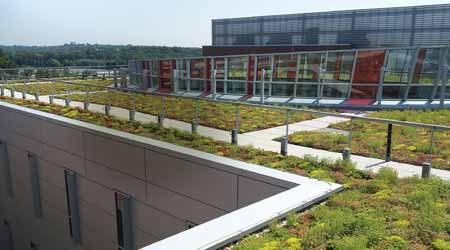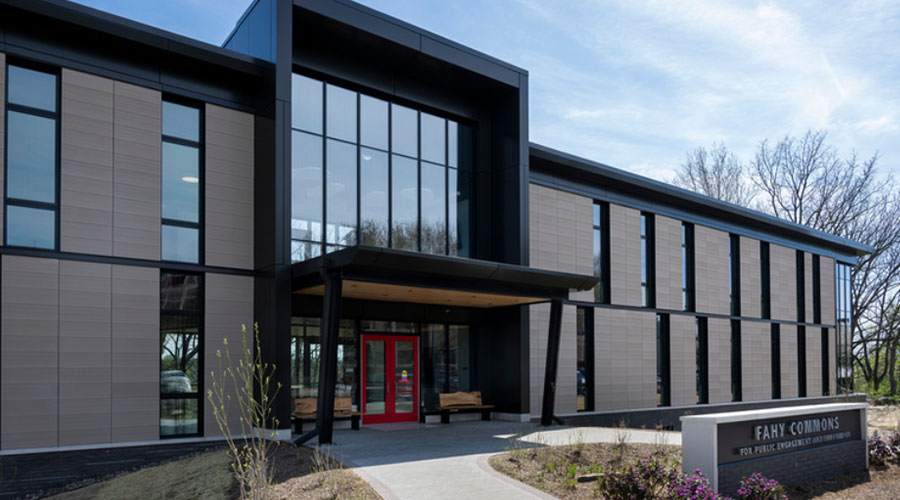 Vegetative roofs at the University of Maryland have provided energy-efficiency and aesthetic benefits to the campus.
Vegetative roofs at the University of Maryland have provided energy-efficiency and aesthetic benefits to the campus.Roofing: Managing Vegetative Roofs After Installation
Performing regular maintenance on a green roof after installation can help the facility and organization see maximum benefits.
Beyond installation
For a facility, an organization and a community to see maximum results from a vegetative roof, proper maintenance is essential. Regular maintenance includes watering, weeding and containing the desired vegetation.
“Realizing that these roofs are living systems and that occasionally, based on continuous monitoring, nutrients might need to be added and plant replenishment might be needed,” Petroff says. “In the case of a primarily sedum roof, they are very easily propagated. They are very easy to plug in new plants and to control any gaps that may have occurred for any reason.
“These roofs do require regular and continuing oversight in order to continue to function for years.”
To properly maintain the roof’s plant material, workers need easy access. Vegetative roofs on the University of Maryland campus can be accessed by different methods, which is beneficial because having plant materials continuously coming in and out of these access points can create a problem if these points are not in ideal locations.
“One of our ongoing review points for any design that is submitted, the first question Michael or I ask is, ‘Where is the access?’” Petroff says. “This is something to consider when these facilities are accepted in the design. It is going to need maintenance, and it is going to need regular maintenance. There may be plant material coming in through that access point and coming out through that access point, as well as media and other tools.
“If that access point is in a place where you don’t want the function to happen, it can become problematic.”
Regular maintenance of vegetative roofs is essential to their success, especially during the growing season, when routine weeding and trimming become more important.
“Staying up with maintenance is the key,” Carmichael says. “You’ve got a lot less work when you are visiting a roof four to six times a year than you do if the building has not seen a person on the roof in a year or two. You’ll find all kinds of things growing on there if you don’t go up there often.
“These things that can grow can present pretty interesting issues when you’re talking about a roof structure and membrane, especially the potential for leaking. So staying ahead of maintenance I think is really the key.”
Related Topics:














